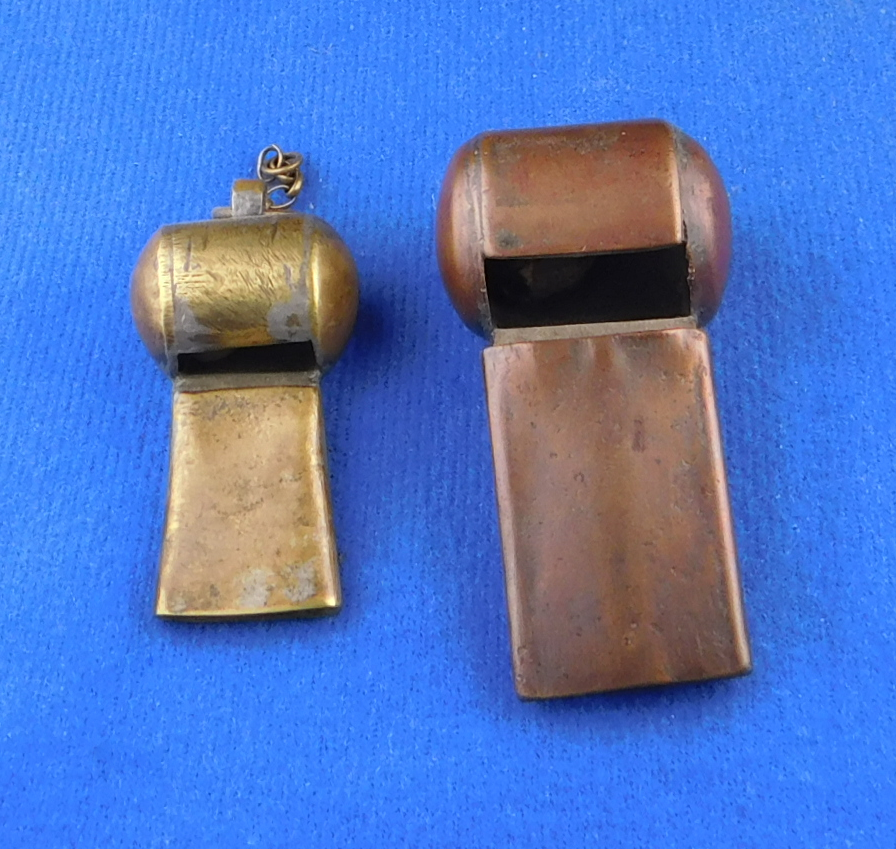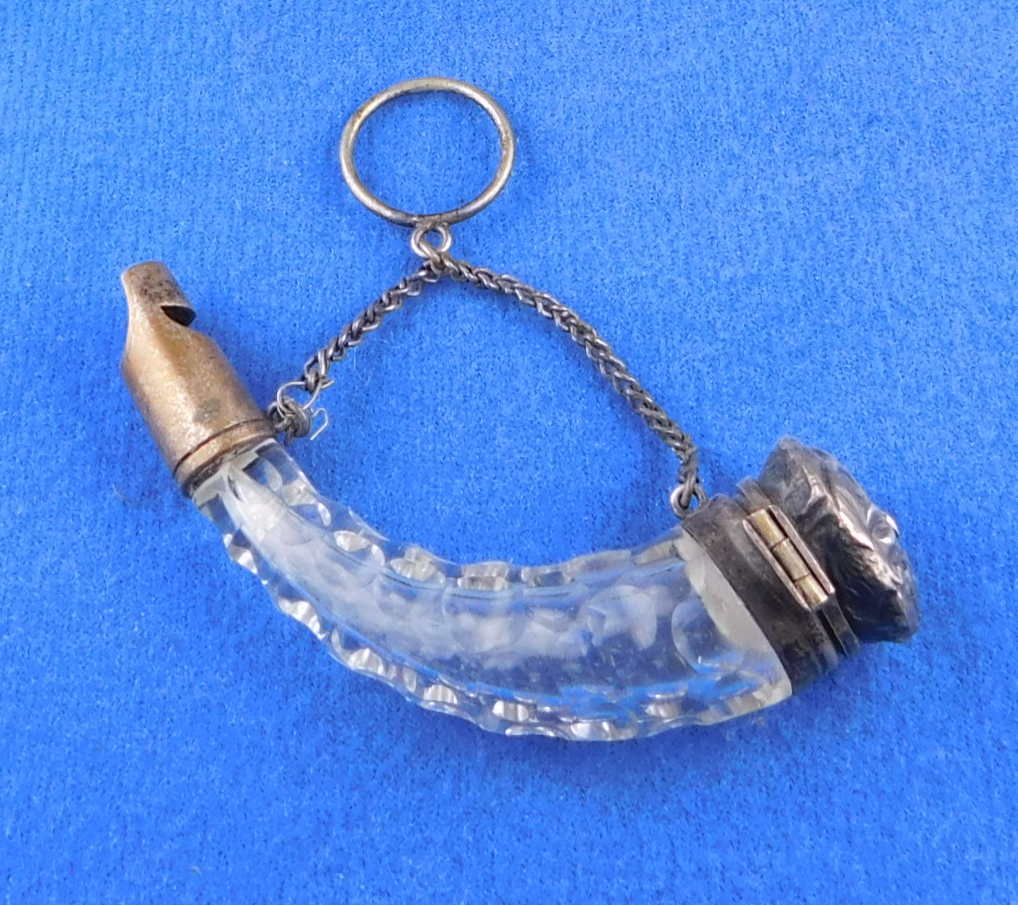Spotlight > Whistle Categories > Escargot > 128 India Escargots
Whistory
A window in time of whistle making history is WW2 – 1940 to 1945 in India, perhaps as short as 1941 to 1943, only three years. It was during this period that a special group of heavy, robust escargots were manufactured by hand in India. They are found in small, medium, and large sizes. Usually they are nickel plated brass, sometimes simply brass, and very heavy.
What sets this group of India escargots apart?
Close examination proves these whistles to be very work intensive, entirely handmade whistles. Starting at the top, the knops are hand filed, roughly finished and in many sizes and placements towards the back of the barrels. Most of the time they are ‘roughly round-ish’ with file marks remaining. In contrast to the crude round(ish) knops, there are knops with roughly filed ‘pointed’ solid pieces, rather than machined round knops or hollow humpback knops commonly seen, both filed types drilled out for attachment strings or chains.
Continued examination encounters tooth grips, when incorporated, that are also hand filed, remarkably from the top, down and from the bottom up, also leaving file marks. Rather than being pressed out by machine, they are left as a raised edge after filing down next to the sides of the tooth grip. This took a remarkable amount of hand working with the whistle construction and then the hand filing.
Additionally, there are two groups, dated and undated. The dated group range from 1941 to 1943. The undated group appear to be from 1941 to an unknow date, in affect till they were made by machine.
Bruce Rolph points to the battle of Britain as a pivotal point seemingly over in October of 1940. The war dept. and other services such as the navy, royal air force decided to accept common equipment, India ( as well as other countries ) was informed that they would have to provide for themselves. Ergo the first dated stamped escargots of this type began in 1941.
The cottage industry, India escargots
Why so many idiosyncrasies? Perhaps because of the characteristic of the cottage industry that had developed in India from centuries past and remained prior to the independence of 1947. The rural village manufacturing from small, micro to medium enterprises, could easily develop their own products/characteristics, even the same small shop turning out the same whistles, could manifest variations of workmanship.
These mini ‘factories’ may have been as small as a single family with its inherent craftsmen, inheriting their particular metal work skills from their own family line. This carried through British rule and even exists today.
The main body of these whistles mirror a machine-made barrel, this is only a reflection as all parts appear to be cast. Likely this shape was adopted from their British connections as well as the 1891 patent design by Hudson from Britain. Some were stamped/engraved ‘from the British empire’.
Escargot whistles from India are not seen prior to this period of WW2. Certainly, no dated stamped escargot whistles are known prior to 1941. Whereas tube shaped whistles stamped with dates are known from at least 1936, but other dates remain elusive. India obtained independence in 1947 from Britain and an economic shift followed.
Aligarh in India Escargots
Aligarh is often seen stamped on escargot whistles from this era. Although industrialization is thought of in Bombay, Calcutta and Madras, Aligarh has been an industrial area for many decades specializing in locks to this day. Likely the iron and brass production there facilitated the manufacturing of escargot whistles, to be made entirely from casting. This is remarkable when you consider that since 1891 at Hudson’s in the UK the major two parts were stamped out of flat stock and then machine folded.
Normally part of the whistle would be stamped out with large ears and then folded over. The barrel could also be stamped and then rounded by machine to fit the side walls exactly. However, these snail shaped whistles show mold marks and file marks inside and outside of these handmade whistles. They do not fit perfectly well with large gaps at times filled with solder. There is occasionally a thin steel tongue fitted to the inside to keep the cork ball from jamming.
What this means is that the entire escargot whistle appears to be cast in all its parts, hand cast, formed, assembled and filed to a finish, during this brief period during WW2, of perhaps just 3 years for dated escargots. AT the same time, an unknown further period for undated ones, before machinery was introduced. This intensive work had not been seen since the Samuel Auld whistles in six pieces circa 1889-90, 50 years prior.
The top three-sided section is cast including the tooth grips, as they appear to be cast as one piece, then filed down around the edges. Part of the charm as well as the distinction of these whistles is the hand filing marks left over.
Thunderer Stamps in India Escargots
Many stamps use the name Thunderer which Hudson won in court in the UK December 23, 1927. Yet here we see these stamps being used 15 years later, stamped The Thunder and The Thunderer Whistle, even using the name acme.
This article focuses on dated escargot whistles from 1941 to 1943 and logo stamped escargots from 1941 to an unknown date (corresponding to World War 2). We will make a comparison and listings of names/stamps. Perhaps further dates will surface for revision.
Whistle Classification
| Category | escargots |
| Class | cottage industry makers |
| Type | military general purpose |
| Class | brass nickel plated brass |
| Sub Class | cast |
Whistle Archeology
Stamps known on India escargots 1941 to 1943 (highlighted BOLD):
Stamps known on India escargots 1941 to unknown date:
- Best 1941
- Best 1942 ( inspection mark )
- Cn/AA19 MVASIN & 1968
- G.R.D Gujarat state
- Govt U. P. Handicrafts 1943
- Govt U. P. Handicrafts Aligarh A.A. 1943 ( inside triangle )
- Govt U. P. Handicrafts Aligarh A.A. 1943 ( inside circle
- Govt U.P Handicrafts Aligarh J 1943
- Heach ? Thunderer ( upside down small whistle ) London model
- I.M Industries 1942 – Imperial Metal Industries ( inspection mark )
- J. P. & Sons *Aligarh* 1941
- K.M.G.S. 1942
- RAM 1942
- R.C.S 1942
- Rharadwa J&Co. Aligarh U.P.
- S.S.D. Bros Aligarh 1941
- Sondi Co. Whistle Made in India ( small )
- Sondi Co. Whistle Made in India ( large )
- The Acme Thunderer ( upside down )
- The Acme Whistle
- Thunderer Whistle
- The Thunderer ( large ) London model
- The Thunder Whistle ( inside crested moon and star )
- The Thunder Whistle ( small )
- The Thunder Whistle ( stamped AHW ? )
- Thunder Saharans made in British Empire

Whistology
First the telltale signs of casting and leftover filing marks. Peering into the window rear wall striations can be seen. The pock marks, bumps and roughness inside follows on each side.
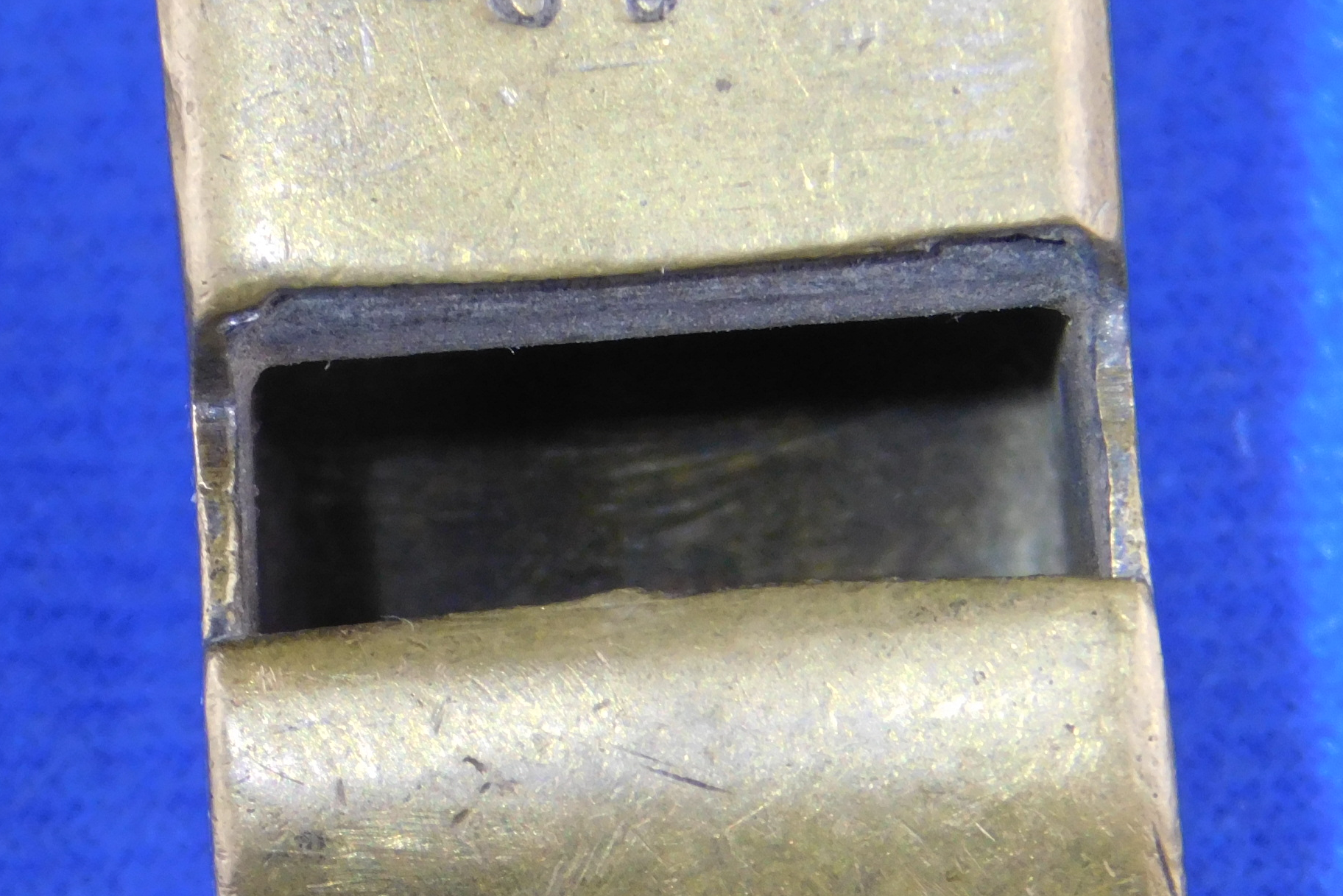
Next, note the casting marks on the underside show the roughness of the molds.
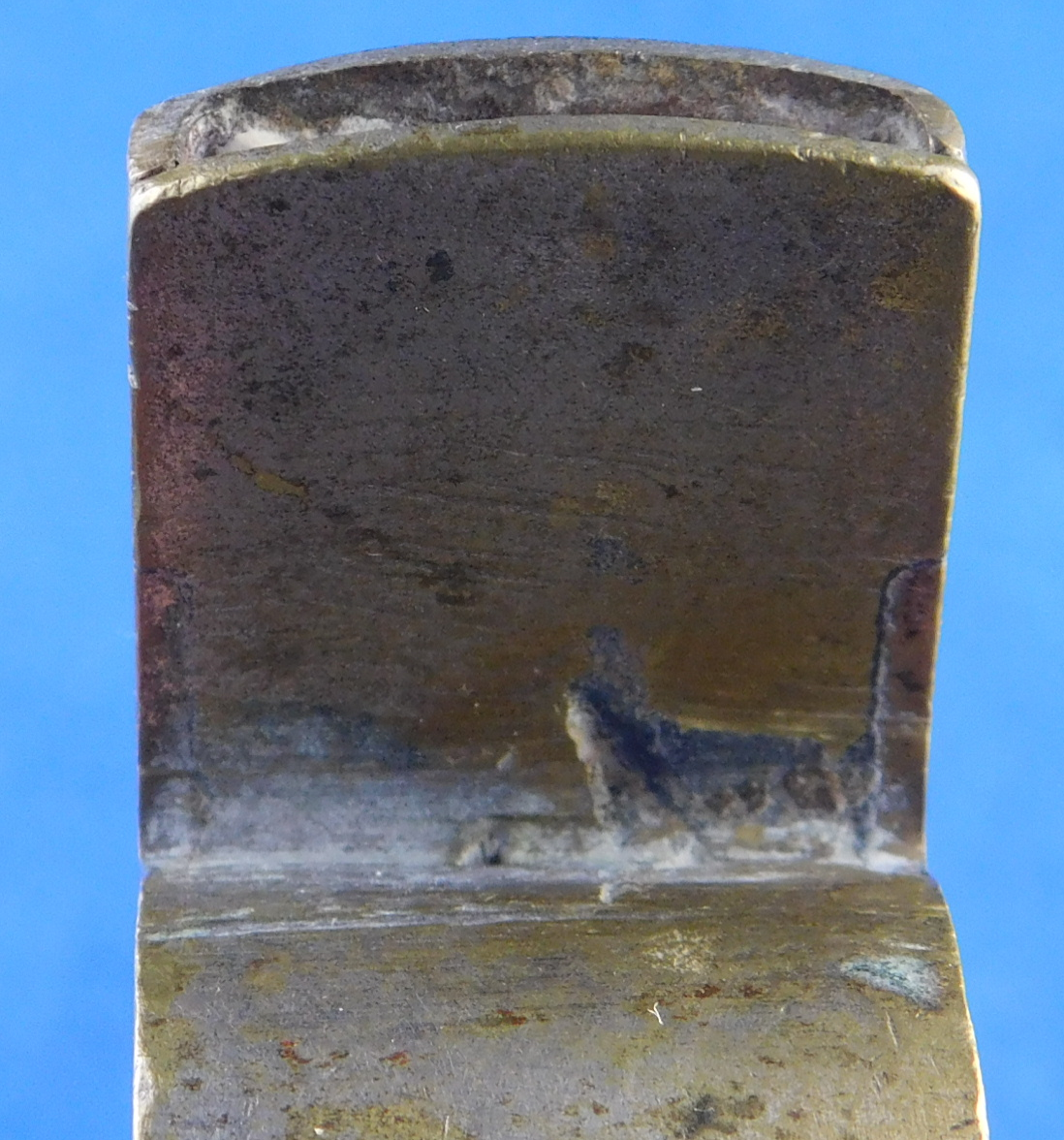
Then, you will see on the rear side by the underside tooth grip, deep file marks.
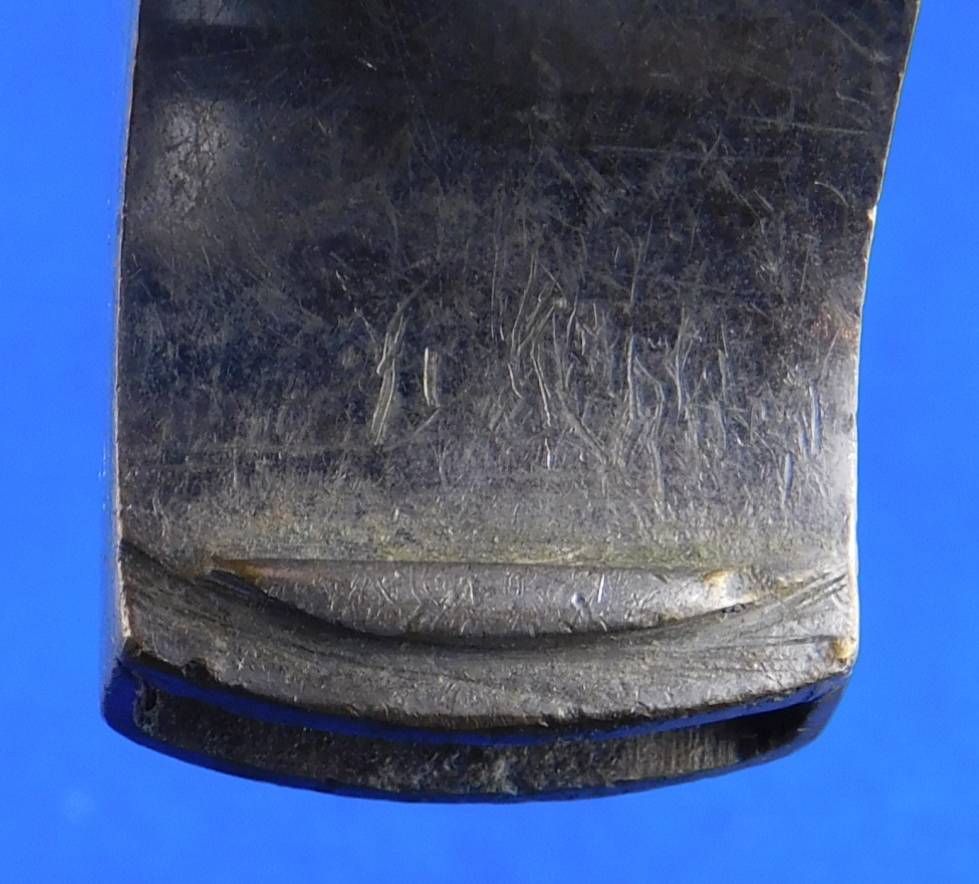
Take note of the body marks across the underside of filings.
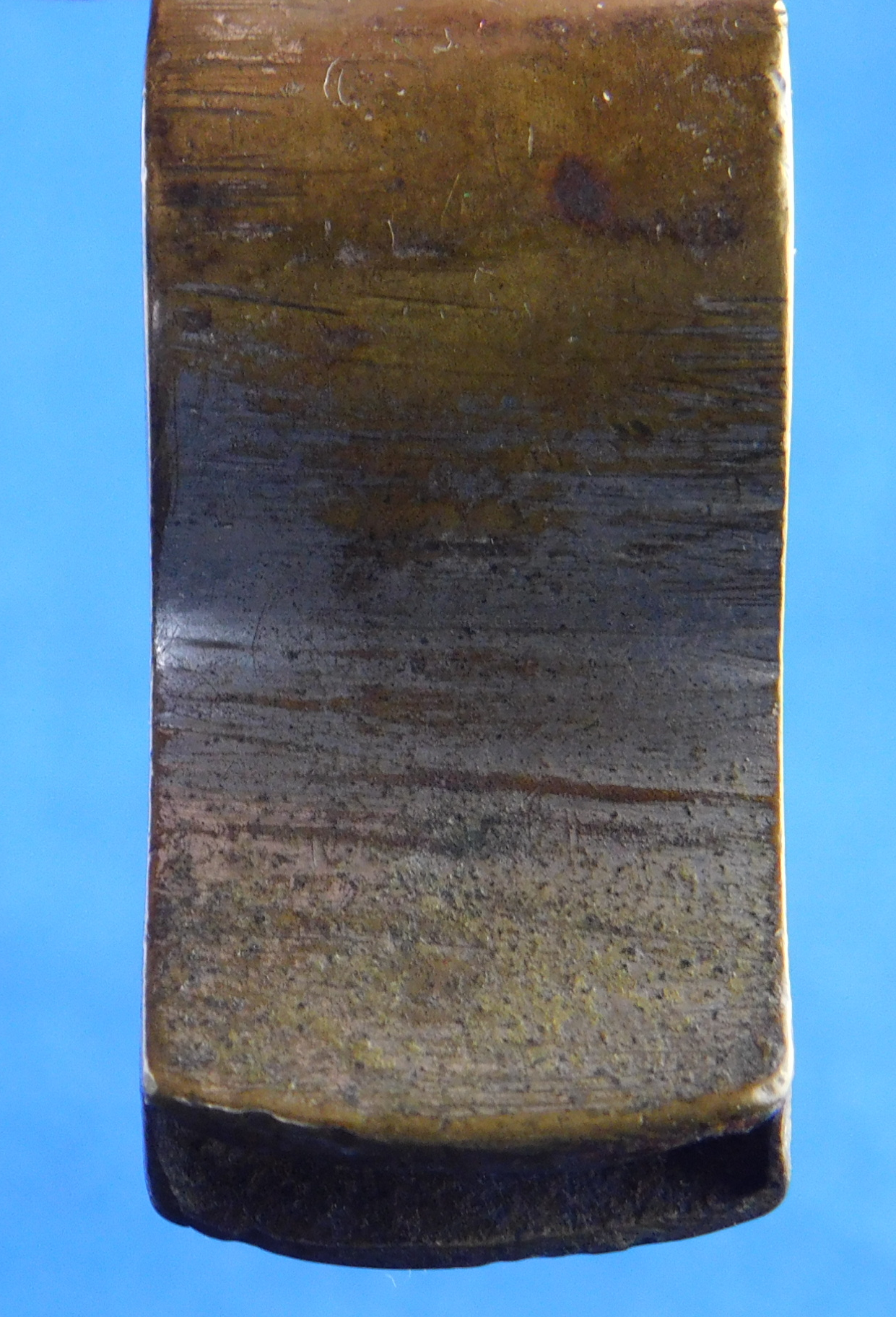
Lastly, see across the top face.
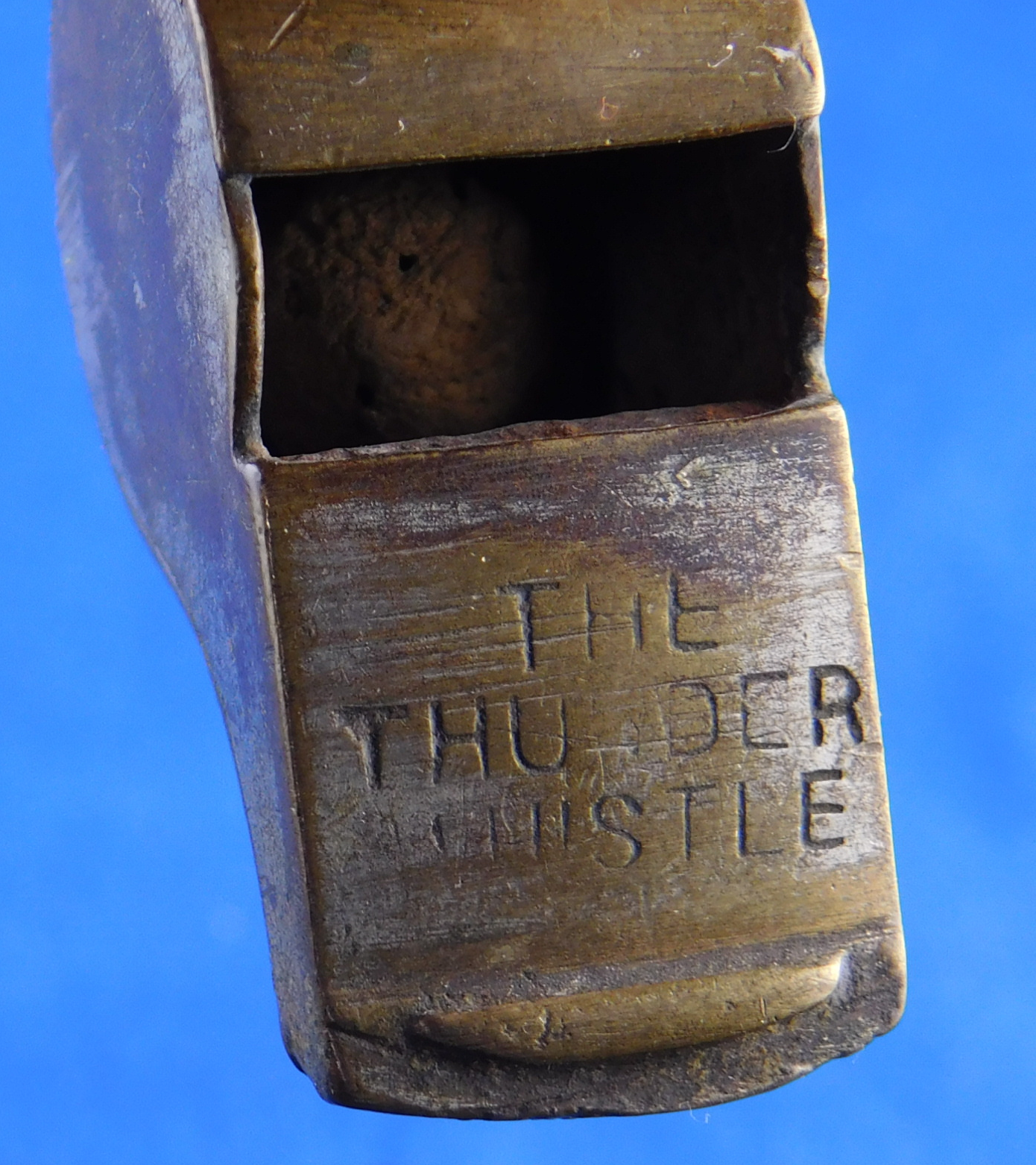
Close examination of the edges where the sidewalls meet will indicate the crude fit of the casting.
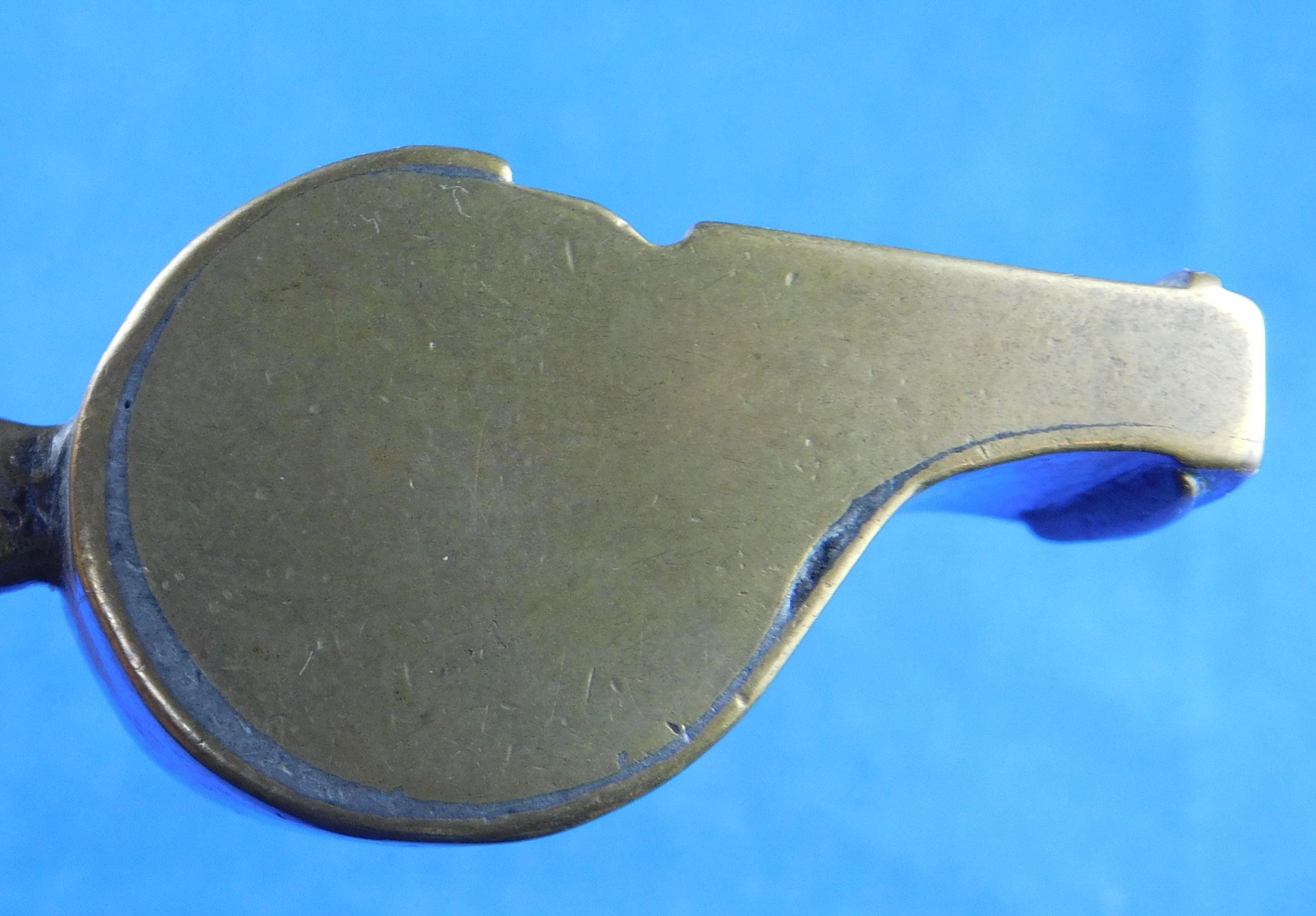
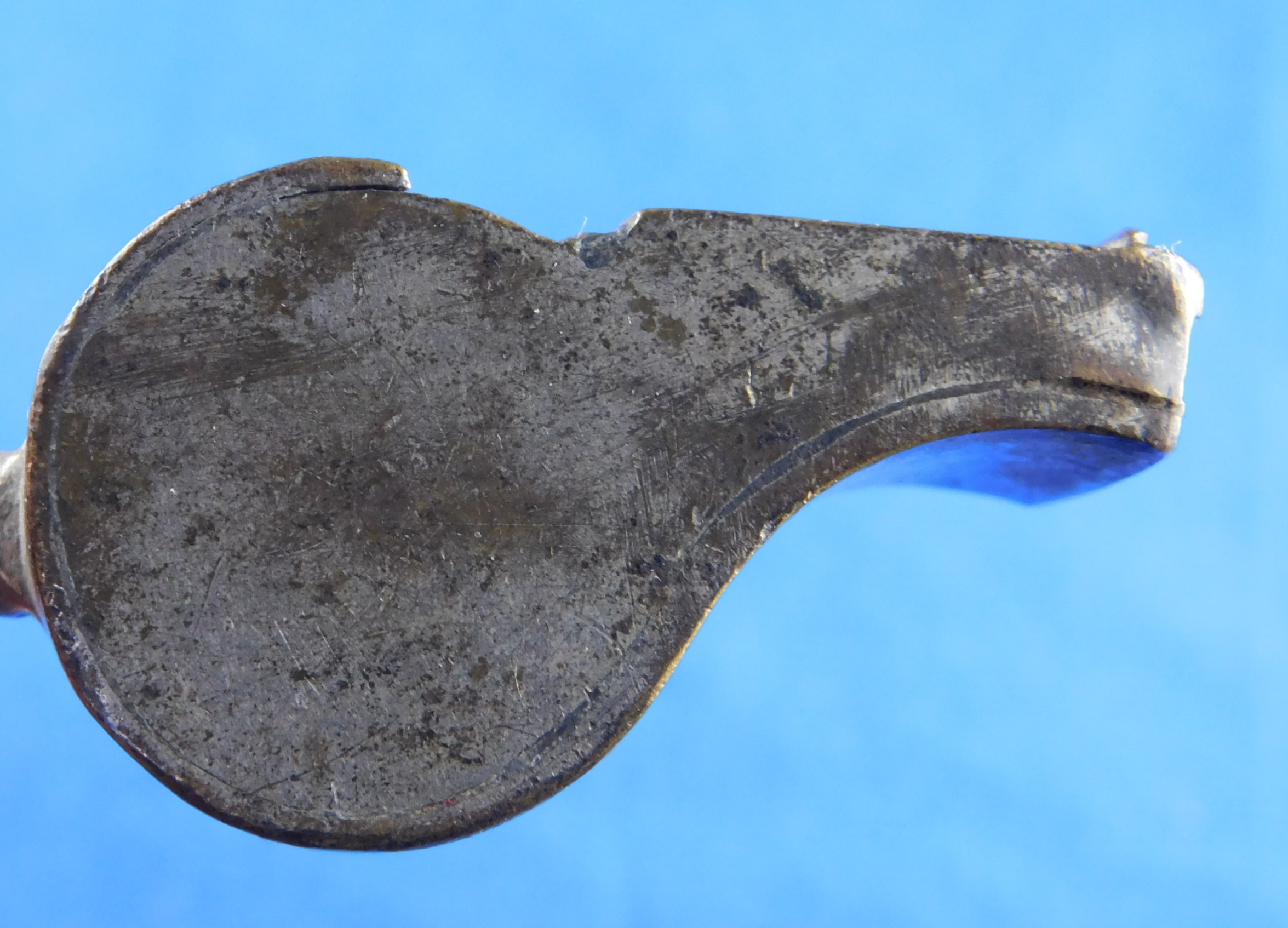
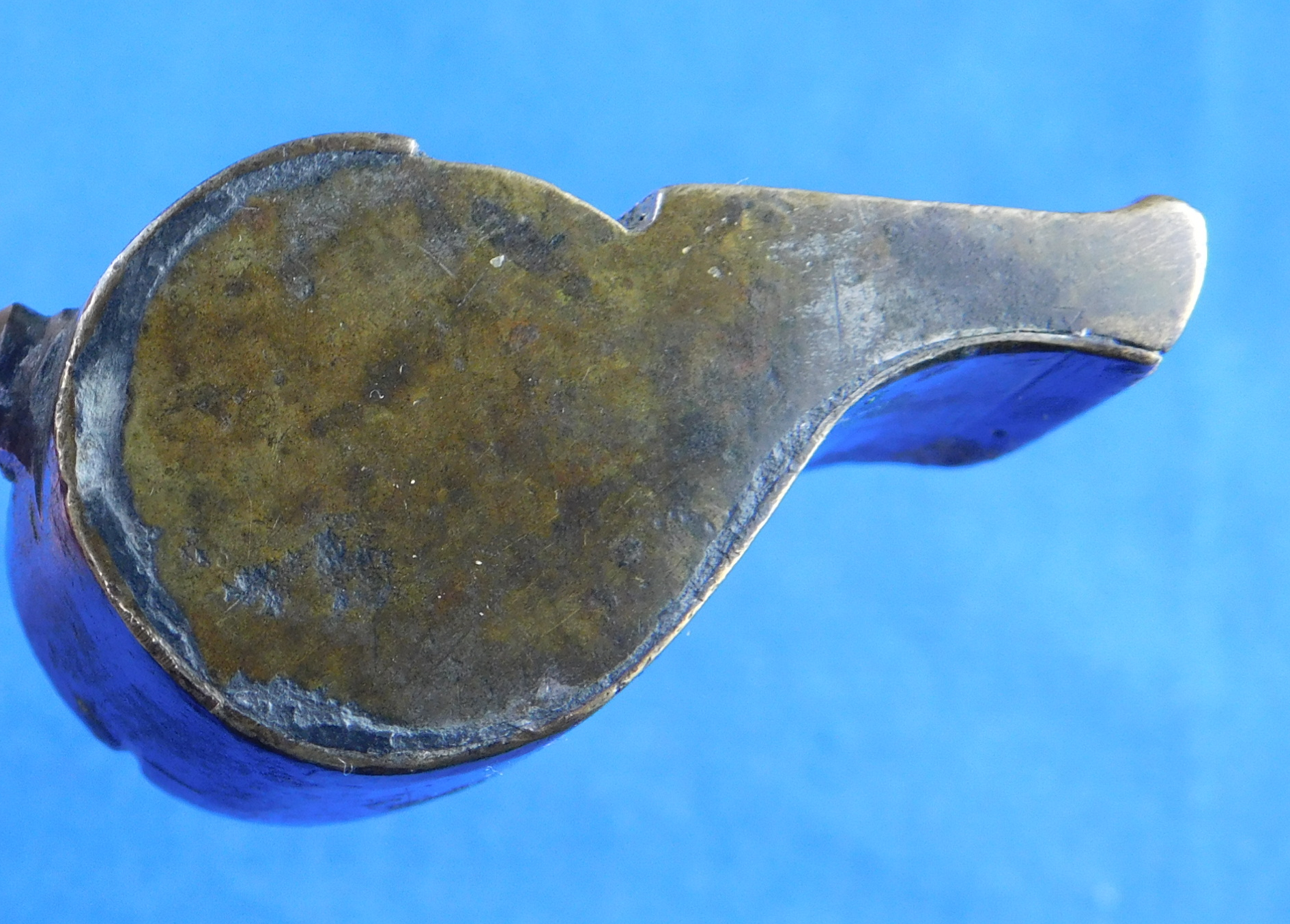
Again, looking from the top down we will examine the knops. Not only the variations of quality and peculiarities are noted, but the file marks.

The same can be said for the tooth grips.

Lastly, a look at the varied stamp designs, dates and crude workmanship of undated escargot whistles.

Conclusions:
At first glance these may look crude, bulky, and heavy, but these escargots are a delightful subgroup of very vintage escargot or snail shaped whistles. The hand filed small cottage industry look of manufacturing, rather than making these whistles less desirable, work to create the opposite effect.
India carved out a special window in history tied to craftmanship with these ornate, sturdy escargot whistles and we hope to find more within this group.
TWG
Drafted November 26, 2020
Revised January 16, 2022
Posted February 9, 2022
Revised February 26, 2022
Revised March 6, 20222
Bibliography:
The Whistle Gallery reference collection
https://en.wikipedia.org/wiki/India_in_World_War_II https://www.ijmra.us/project%20doc/2017/IJRSS_DECEMBER2017/IJMRA-12880.pdf
International Journal of Research in Social Sciences Vol. 7 Issue 12, December 2017, ISSN: 2249-2496 Impact Factor: 7.081– ORIGIN AND DEVELOPMENT OF COTTAGE INDUSTRIES IN INDIA : A STUDY IN PREINDEPENDENCE ERA. Dr. Dipak Kumar Kundu
American International Journal of Research in Humanities, Arts and Social Sciences-How the Indian Cottage Industries Declined in British Period-Dr. Hareet Kumar Meena
https://oxford.universitypressscholarship.com/view/10.1093/acprof:oso/9780198753643.001.0001/acprof-9780198753643-chapter-10
